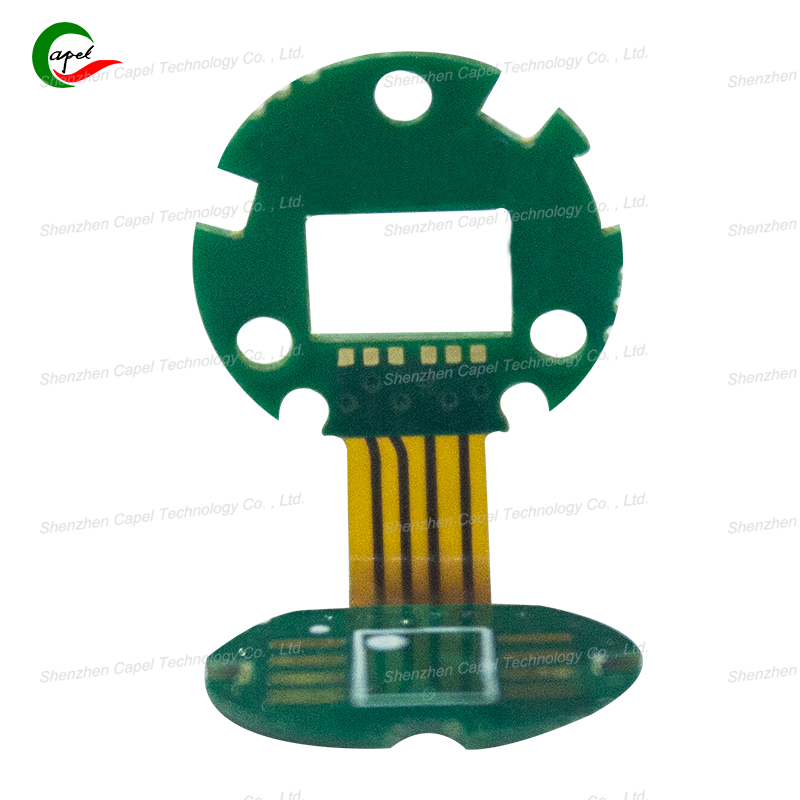Date: 2025-10-17
Dealing with damaged traces in flexible PCB sections doesn't automatically mean board replacement. Through numerous field repairs and prototyping fixes, our team has developed reliable methods that can salvage what might otherwise be scrapped boards. The key lies in understanding the material limitations and applying the right repair strategy for each situation.
Initial Assessment: The Foundation of Successful Repair
Before attempting any repair, proper diagnosis is crucial. We use magnification between 20-50x to carefully examine the damage. It's important to distinguish between hairline cracks and complete trace separations, as each requires a different approach. We also check if the damage extends into the substrate material itself, which would require a more extensive repair process.
The repair environment setup matters significantly. We ensure adequate lighting, stable work surfaces, and all necessary materials within reach before starting. This preparation prevents rushed decisions and potential mistakes during the critical repair phases.
Conductive Silver Paste Method for Low-Frequency Applications
For low-speed signals and minor cracks, conductive silver paste offers a reliable solution. In our experience with sensor interfaces and control circuits, this method has proven particularly effective.
The surface preparation phase is critical. We thoroughly clean the area with high-purity isopropyl alcohol, using swabs that won't leave residue. Any contamination will compromise the adhesion of the repair material.
Application technique makes all the difference. We use fine-gauge dispensing needles to apply precisely controlled amounts of silver paste. The goal is to create a thin, even layer that bridges the damaged section without creating thickness variations that could become stress points during flexing.
Curing parameters require careful attention. We use temperature-controlled hot air stations set between 80-100°C, maintaining consistent distance and movement to avoid localized overheating. The flexible substrate can tolerate brief exposure to these temperatures, but prolonged or excessive heat will cause damage.
Copper Jumper Approach for High-Frequency Circuits
When working with RF traces or high-speed digital signals, we prefer using ultra-fine copper wire for repairs. This method better preserves the impedance characteristics critical for these applications.
Wire selection is crucial. We stock various diameters of enameled copper wire, typically matching the original trace thickness. The insulation prevents accidental shorts during handling and installation.
Soldering technique requires precision. We use temperature-controlled irons with micro-tips, set to the minimum temperature that will achieve reliable solder flow. The contact time is kept absolutely minimal - typically 1-2 seconds per connection point. We've found that using lead-free solder with a lower melting point helps reduce thermal stress on the substrate.
Stress relief is essential for repaired sections that will experience flexing. We apply small amounts of flexible epoxy adhesive to secure the jumper wire, taking care not to create stiff spots that could concentrate bending stresses.
Verification and Testing Protocols
After any repair, comprehensive testing is mandatory. We begin with basic continuity checks using micro-probes to verify electrical connection. For impedance-critical traces, we use TDR measurements to ensure the repair hasn't significantly altered the characteristic impedance.
Mechanical testing is equally important. We subject repaired areas to repeated bending cycles using fixtures that simulate the actual application conditions. Resistance measurements during and after this testing help identify any reliability issues.
Common Pitfalls and Lessons Learned
Through experience, we've identified several critical mistakes to avoid:
Thermal damage remains the most common failure point. We've learned that even brief exposure to excessive temperatures can weaken the polyimide substrate, leading to premature failure.
Material compatibility issues can sabotage repairs. We now maintain a database of compatible materials - certain adhesives or solders that work well with rigid boards may fail when used on flexible circuits.
Geometric considerations often get overlooked. Repairs that create thickness variations or sharp transitions tend to fail first during flexing cycles. We always aim to maintain smooth contours and even thickness across repaired sections.
Long-Term Reliability Considerations
The true test of any repair comes months later. We've implemented follow-up procedures to track repair longevity across different applications. This data helps refine our techniques and material selections.
Environmental factors play a significant role in repair durability. We've adapted our processes for boards that will experience temperature cycling, humidity exposure, or chemical contact in their operational environment.
Documentation practices have proven valuable. We maintain detailed records of each repair, including materials used, process parameters, and test results. This information helps troubleshoot any future issues and improves our repair success rate over time.
Through continuous refinement of these techniques, we've achieved reliable repair success rates exceeding 85% for flexible circuit damage, significantly reducing scrap costs and extending the service life of valuable electronic assemblies.
related link:
Capel manufacturing PCBs since 2009. Professional technology and high-precision Printed Circuit Boards involved in Medical, IOT, UAV, Aviation, Automotive, Aerospace, Industrial Control, Artificial Intelligence, Consumer Electronics etc..